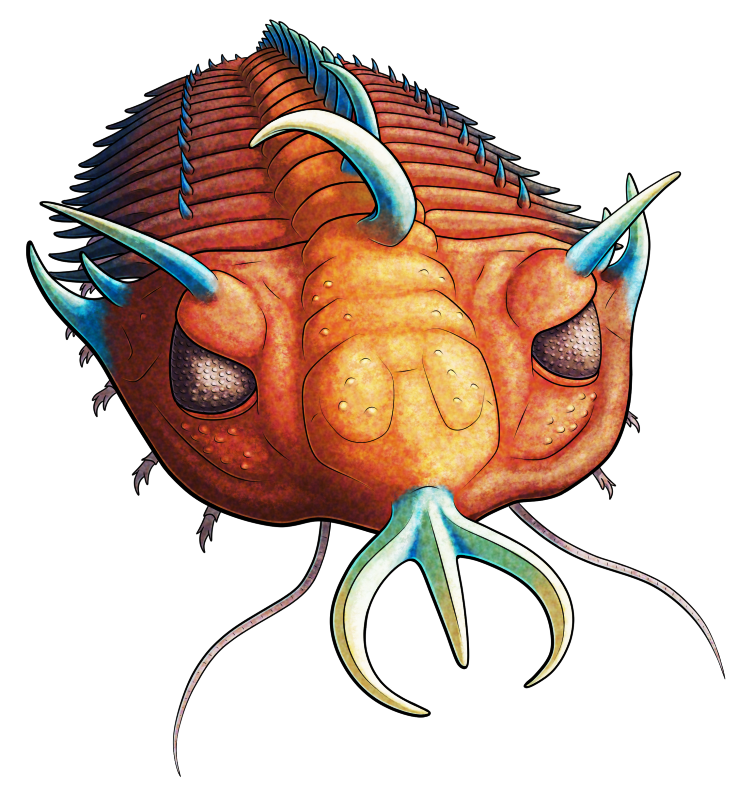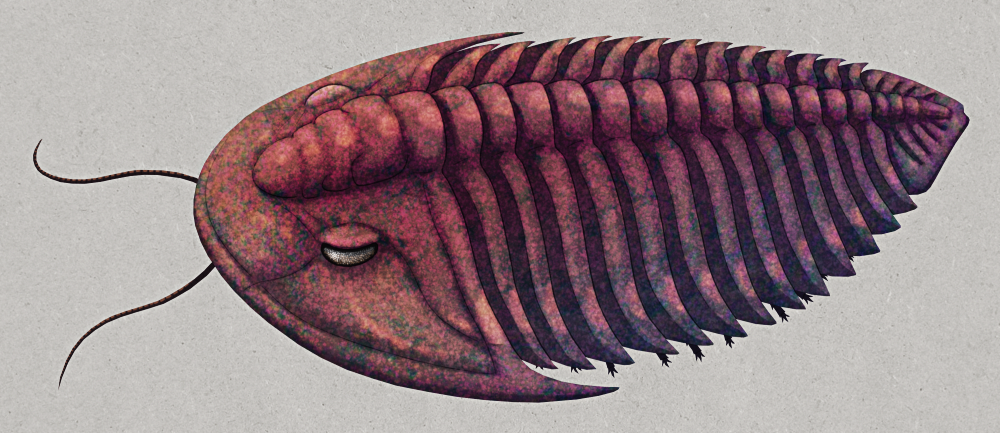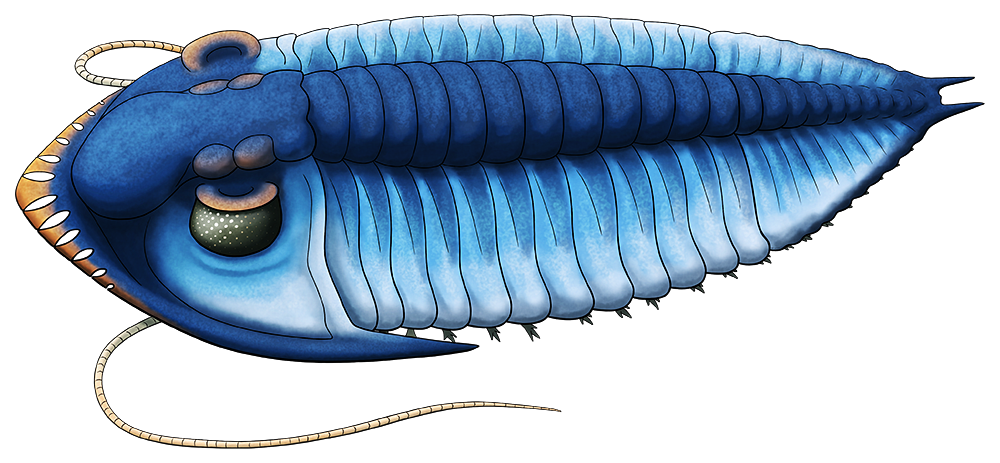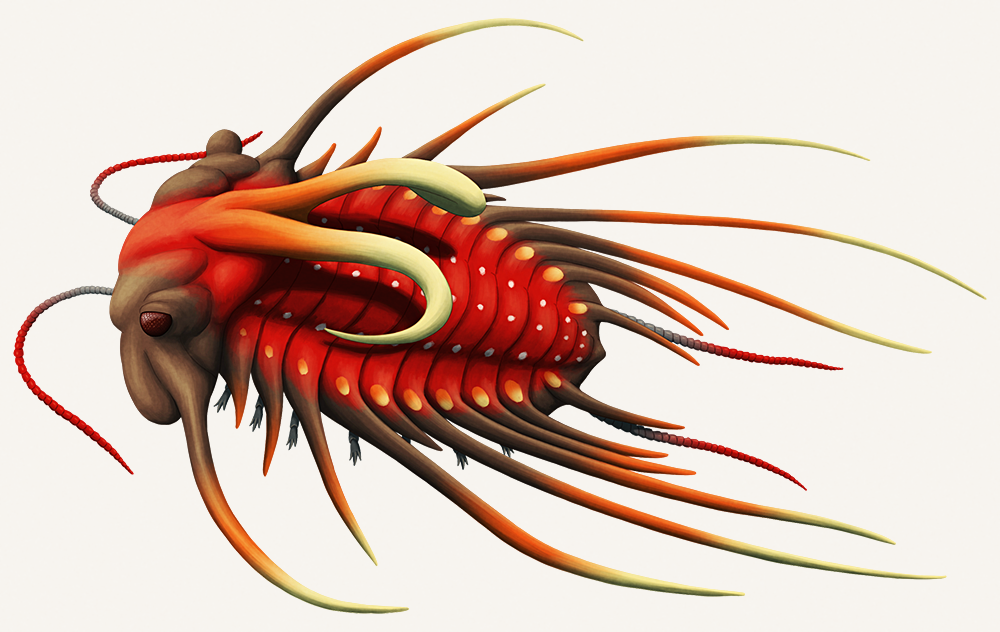The genus Walliserops was one of the weirdest-looking trilobites, covered in numerous pointy spines and sporting a large three-pronged “trident” on the front of its face.
They also had some degree of asymmetry in their bodies. Their tridents often didn’t fork evenly, and their long forehead spines curved off to one side – possibly so they could lift their heads up without stabbing themselves in the back.
Walliserops hammii lived in what is now Morocco during the early-to-mid Devonian, about 403-392 million years ago. Around 5cm long (~2″) It was one of the “short trident” species of Walliserops, and its chunky forehead spine curved particularly strongly to the right.
The function of these trilobites’ elaborate tridents is still poorly understood. But an unusual individual of the long-tridented species Walliserops trifurcatushas been found with a lopsided four-pronged trident, and since it was able to grow to full maturity the shape of the structure probably wasn’t absolutely vital for survival, suggesting it wasn’t used for feeding or sensory purposes.
The tridents may instead have been used for combat with each other similar to the horns of some modern beetles. However, these sorts of features are usually only seen in males, and there’s currently no definite evidence for any significant sexual dimorphism in trilobites.
(Although perhaps like ceratopsid dinosaurs their ornaments were just present in both males and females, being also useful for species recognition, visual display, and defense against predators.)





